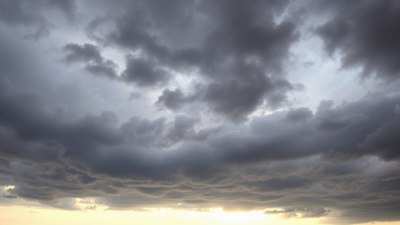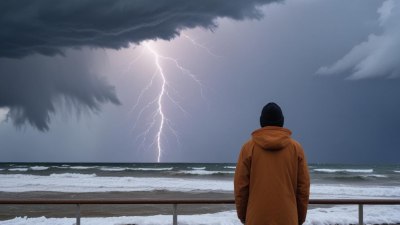Why Windy Days Make You Feel Like a Misunderstood Poet
Explore the poetic and emotional connection between windy days and feelings of being misunderstood, blending nature's influence with human introspection.

Image created with Flux Schnell
There is an inexplicable charm that windy days hold, a sense of restless energy and subtle melancholy that can transform even the most mundane moments into poetic experiences. Many people find themselves feeling unusually introspective and creatively charged when the winds howl outside their windows, as if the atmosphere itself invites reflection and emotional depth. But why do windy days evoke the sensation of being a misunderstood poet, struggling to articulate inner turmoil amidst a tempestuous world?
The wind is a powerful symbol throughout history and literature, often representing change, freedom, and the ineffable. It carries an invisible force that can be both gentle and violent, unpredictable yet constant. When the wind stirs, it disrupts our environment, shaking leaves, rattling windows, and sweeping through empty streets. This persistent unrest outside echoes the inner restlessness many feel during such days — a desire to be heard, a yearning for expression, and the frustration of communication barriers.
Poets, by nature, are sensitive souls attuned to subtle shifts in emotion and environment. The wind’s dynamic presence acts as a mirror to their inner landscapes. On windy days, the air itself seems charged with unspoken words and unresolved feelings, whispering in tones just beyond comprehension. It is as though the breeze carries the sighs of every misunderstood sentiment, every unvoiced plea wrapped in metaphor. This ambient tension often inspires creative expression, yet also heightens the sensation of being isolated, since the poetic mind craves not merely solitude, but meaningful connection.
Physiologically, windy weather affects our moods and cognitive processes. The constant stimulus from the surroundings can lead to heightened alertness or a kind of nervous energy. Research into weather psychology shows that variable weather patterns influence neurotransmitters like serotonin and dopamine — chemicals that regulate mood and social behavior. Wind, with its unpredictable gusts, can create a mixed sensory input, fostering feelings of agitation or melancholy. For a poet, this mental climate becomes fertile ground for writing deeply personal and evocative verse, albeit sometimes tangled in ambiguity and frustration over imperfect communication.
Socially, the metaphor of the misunderstood poet on a windy day extends to the challenges of articulating complex emotions in a world that often prefers clarity and simplicity. Just as the wind carries sounds away and distorts them, a poet’s nuanced expressions may be lost or misconstrued by others. This gap between intention and perception breeds a sense of isolation akin to standing alone against a blustery gale, trying to shout but hearing only one's own echo. It is a shared human experience: to feel at odds with collective norms, compelled to express profound thoughts yet met with silence or misunderstanding.
The ambiance of a windy day reinforces this sensation. Imagine sitting by a foggy window while the wind thrashes past — the room feels both cocooned and exposed. Every line of poetry or phrase uttered against such a backdrop carries an extra weight, reverberating with the spirit of the tempest outside. This setting heightens the emotional intensity of the creative process, as if the very act of writing or speaking absorbs the kinetic energy of the environment. The misunderstood poet is thus entwined with nature's moods, their fate linked to the eternal dance of the elements.
Many iconic poets have made wind a central motif in their work due to its symbolic versatility. For example, Percy Bysshe Shelley's "Ode to the West Wind" evokes the wind as both a destroyer and a preserver, an agent of transformation and inspiration. Wind’s dual nature perfectly captures the paradox of feeling misunderstood: a force that disrupts, yet also propels growth. Similarly, Emily Dickinson’s poems often reflect nature’s subtle moods to explore isolation and communication, where even the gentlest breeze carries multitudes of meaning beyond words.
The tendency to romanticize windy days as moments of profound insight and solitude can also be traced to the sensory experience itself. Wind amplifies sounds and silences alike — leaves scrape more insistently, branches creak ominously, even footsteps seem hurried and tentative. This sensory irresolution heightens awareness of both self and surroundings, sharpening the poet’s perception while simultaneously blurring clarity. The effect is a liminal mental state where language feels slippery and emotions run raw, intensifying the feeling of being caught between expression and incomprehension.
On a psychological level, windy days can act as catalysts for memory and nostalgia. The sound and movement of the wind often evoke long-forgotten moments or feelings, triggering streams of consciousness that blend past and present. This temporal overlap is fertile ground for poetic thought, where language attempts to capture fleeting sensations while grappling with the limits of expression. Feeling misunderstood thus becomes entwined with the elusive nature of memory itself, challenging the poet’s voice to bridge time and meaning.
Beyond literature and psychology, the experience of windy days also has cultural and philosophical implications. Various cultures attribute winds with spiritual or mystical significance, often linking them to messages from the divine or forces beyond human control. The metaphor of the misunderstood poet on a windy day can be read as an allegory for the human condition: struggling to communicate profound truths amid the chaos and unpredictability of existence. The wind’s whispering is akin to the elusive truths sought by the artist — always just beyond clear reach.
In modern times, the urban environment adds complexity to this metaphor. Wind gusts swirling between skyscrapers and alleyways create a chaotic soundscape that can feel simultaneously oppressive and inspiring. The misunderstood poet becomes a figure navigating this noisy labyrinth, striving to find authentic voice within a dissonant world. The interplay of natural and human-made turbulence deepens the emotional texture of windy days, reflecting contemporary challenges in communication and self-expression.
Technological advances have somewhat attenuated our direct experience of natural wind, with climate control systems and indoor lifestyles reducing exposure. Yet, when we do encounter windy days, the sensation can be more striking — a reminder of our connection to elemental forces. This resurgence of awareness prompts a re-engagement with internal landscapes, enabling the poetic mind to reawaken. Wind then functions not merely as weather but as a symbol of renewed sensitivity and artistic awakening.
Moreover, the visual aesthetics of wind influence poetic imagination. Fluttering leaves, rippling water, and blown scarves create dynamic tableaux that inspire metaphor and narrative. The constant motion breaks stillness, inviting reflection on themes of impermanence, transition, and resilience. The misunderstood poet sees in the wind not just a natural phenomenon but a living metaphor for their own shifting emotions and elusive messages.
The social isolation often accompanying windy days also mirrors the deeper existential solitude many poets experience. Blustery weather can discourage social interaction, fostering quiet moments alone with one's thoughts. This solitude allows for introspection and creative development but can also magnify feelings of alienation. The misunderstood poet may find their solitude simultaneously a sanctuary and a burden, enhancing the emotional complexity of their experience during windy days.
In addition, the unpredictability of wind mirrors the unpredictability of poetic inspiration and human emotion. Just as a sudden gust can disrupt the calm, moments of creative insight or emotional upheaval arrive without warning. This kinship between nature’s caprice and the poet’s inner life reinforces the archetype of the misunderstood creator wrestling to give form to transient sensations.
Windy days also test physical endurance and patience, which can deepen the poetic's appreciation for perseverance in the face of struggle. Braving fierce elements becomes a metaphor for persistence in artistic endeavors and emotional authenticity. The misunderstood poet embraces this challenge, finding strength in vulnerability and fragile clarity amid turmoil.
The sensation of wind on the skin is tactile and invigorating, heightening bodily awareness. This physicality contributes to a holistic poetic experience, where mind and body respond in tandem to environmental stimuli. The misunderstood poet tuned into these vibrations channels a heightened sense of presence, finding new language to convey the ineffable connection between self and world.
Artistic expressions inspired by windy days span beyond poetry into music, painting, and dance, underlining the universal resonance of wind as a motif of emotional turbulence and creative force. The misunderstood poet often works within this interdisciplinary nexus, drawing from diverse sensory inputs and cultural symbols to enrich their voice.
The relationship between windy days and feeling like a misunderstood poet reflects complex interplay between environment, psyche, and culture. It underscores the profound impact of natural phenomena on human emotional life and artistic expression. By embracing the wind’s power and mystery, poets tap into shared human experiences of longing, communication, and transformation, crafting works that resonate across time and space.
Ultimately, windy days remind us that feeling misunderstood is part of the human condition — a sign of depth, sensitivity, and the courageous pursuit of meaning in a noisy, shifting world. The restless wind becomes both companion and challenge to the poetic spirit, urging it onward in the ceaseless quest to translate inner storms into words that find resonance, however fleeting, beyond the gale.











